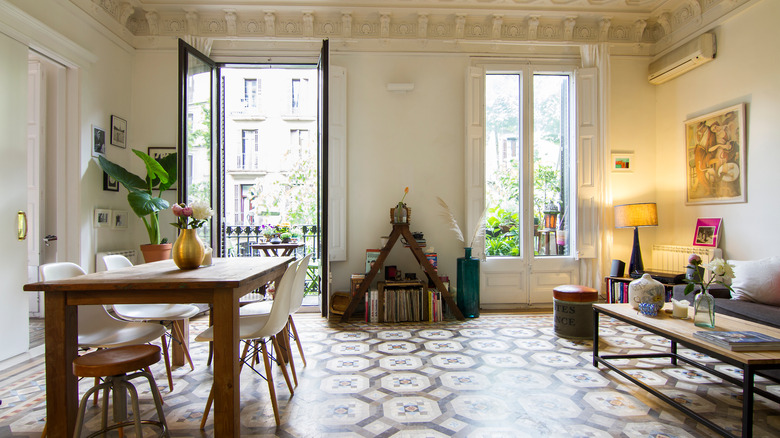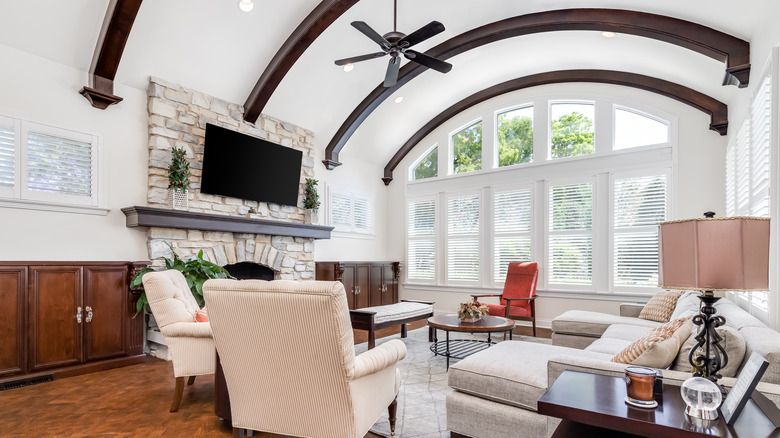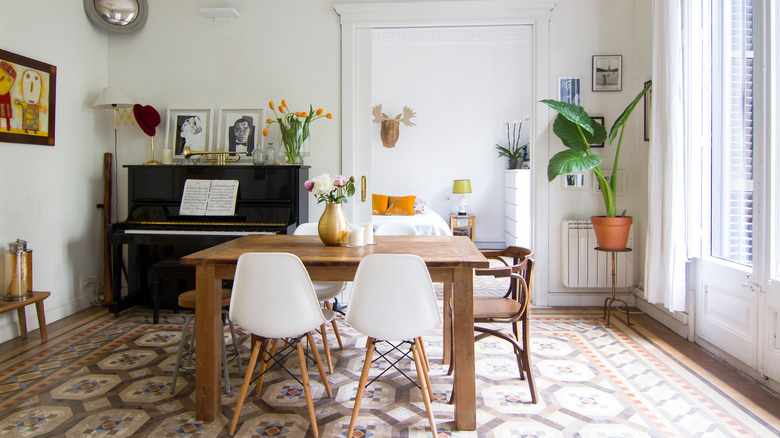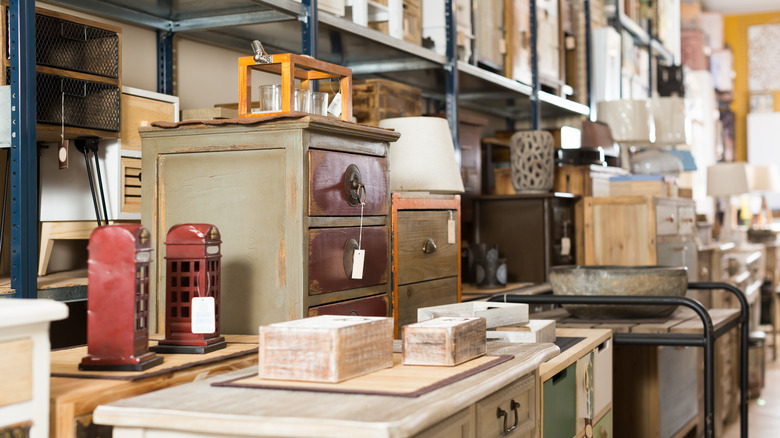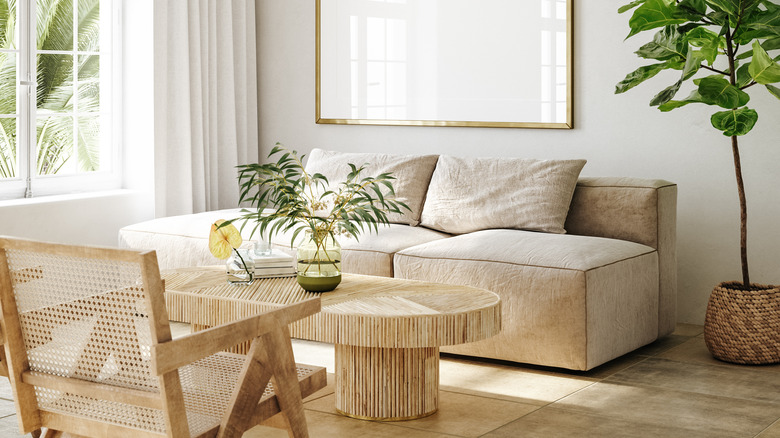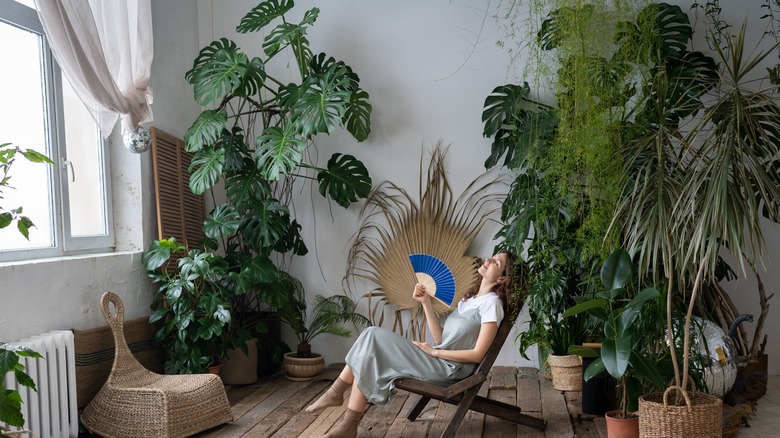5 Simple Ways To Bring Modern Spanish Style Into Your Home Decor
When it comes to decorating your home, picking a theme and having a vision is the first step. Once you've decided what style you're going for, sourcing the right accents, decorations, and designs will make the dream a reality. For example, if you've always wanted to incorporate a Spanish interior, there are a variety of ways to embrace the style. You can choose between a modern vibe or a Spanish colonial décor, both of which will give your home an enchanting, magical atmosphere. From painted tiles to dreamy arches, there is no end to the elements you can add to redecorate, renovate, or add on to existing spaces.
The Spanish style has been around for many years, and homeowners have perfected their own version of the popular design. According to Pulte Homes, this theme has been around for centuries, constantly changing and evolving with new ideas and inventions. In the 1600s, Spanish explorers began building colonial homes and architecture around the United States, and today, these influences can be seen in the unique shapes and styles encompassing the design approach. You can easily incorporate these themes with a few simple additions.
1. Use exposed beams
One easy way to bring a Spanish style into your home is to incorporate exposed beams. You can choose from stained and smooth designs or rustic wood that gives a raw appearance, as both will give your abode a Spanish atmosphere that draws in the eye.
Choosing dark wood will accentuate lighter walls and complement the differences, making the space appear more open. According to Beer Home Team, wood furniture is ideal for creating a natural vibe that is also a popular Spanish trend. The colonial décor made this theme incredibly notable by alternating with this material and wrought iron channels.
Accent both of these with thicker drapes, lighting fixtures that offer a lavish feel, and artwork that exudes intricate patterns. For your furniture designs, use high-backed chairs and large headboards that allow people to see the motifs embedded in the wood or iron. Opting for bigger statement pieces ties the furniture, wooden beams, and natural elements together.
2. Add tiles
Ornate and painted tiles have long been a staple of Spanish design; using these to make your interior pop is key. You can go for an intricate floor pattern with tiles or find other ways to draw attention to these additions by using bright colors and fun designs. For example, incorporating Mexican tiles in different shades of terracotta allows brightness into any room but also offers a Spanish theme that can match any décor. Rustico Tile & Stone recommends using Saltillo flooring because the color and style make it one of the best options for this theme.
You can also try mixing terracotta or single-colored tiles with patterned selections to make an eye-popping creation. Lay the plain pieces on top of stairs or landings, and place the patterned or designed slates facing outward for a truly Spanish feel. This theme thrives off of blending colors and inventing bright, attention-grabbing walls, floors, and surfaces. Don't be afraid to invest in a variety of hues to add throughout your home.
3. Incorporate Spanish-style antiques
The Spanish style has roots in colonial-era design, and one way to tie in the old world to your modern version is by incorporating antique pieces into your décor. You can add a taste of another time by finding vintage tables, chests, chairs, stools, or even small accents like frames and dotting them throughout your home. Find items that display natural elements like wood or iron, and aim for warm colors rather than showy hues. According to Love To Know, keeping accessories simple and minimalistic is one of the best ways to represent a true Spanish-inspired home.
If you find larger pieces when shopping for antiques or vintage, like vases, pots, or large benches, you can use them as entryway décor. If you plan to incorporate more ornaments or smaller pieces, place them sparingly in order to keep every room open and focused on the furniture and structure itself. Spanish homes focus more on the abode itself and less on clutter, so try to avoid covering every available surface and aim for larger statement pieces.
4. Use rattan furniture
Your furniture affects the interior design as much as the wall color or flooring and can be used to create a theme in any room. However, when it comes to turning your house into a Spanish getaway, you want to make sure the furniture matches the other touches you've made. Exchanging certain pieces with rattan items will help bring the whimsical design to the forefront and create a truly dreamy interior. Chairish notes that Spanish colonial furniture can be identified by its rustic appearance, as well as less focus on frills while still providing comfort and a pleasing aesthetic.
Wicker and rattan furniture can fit nicely in amongst terracotta tiles and stucco walls, giving off a European vibe that makes people feel like they are feet away from beautiful Spanish terrains. Using these materials and types of furniture will create a bungalow-style interior that mixes perfectly with the simplistic nature of the theme. Combine these among thicker wood pieces or wrought iron designs to create a relaxing environment for guests and residents alike.
5. Don't forget the plants
One of the easiest ways to add a Spanish flair to your home interior is with plants. Tropical species can bring the theme to life within any space and is an affordable method to decorate with. According to ThinkSpain, there are a variety of plants you can use within each room to bring in exotic vibes. Head to your local nursery or plant store and look for split-leaf philodendron, ZZ plants, and snake plants like bowstring hemp. These tropical additions will bring greenery and nature to your walls and add to the Spanish theme.
Bowstring hemp helps create oxygen throughout the evening hours, so it is great for bedrooms to purify the air. The philodendron, or Monstera as it is also commonly known, derives from warm, dry climates and therefore doesn't require a lot of water or maintenance. You can get away with adding moisture twice during the week when it's hot outside and once in the colder months. Each of these plants will add a much-needed boost and offer its own benefits.
